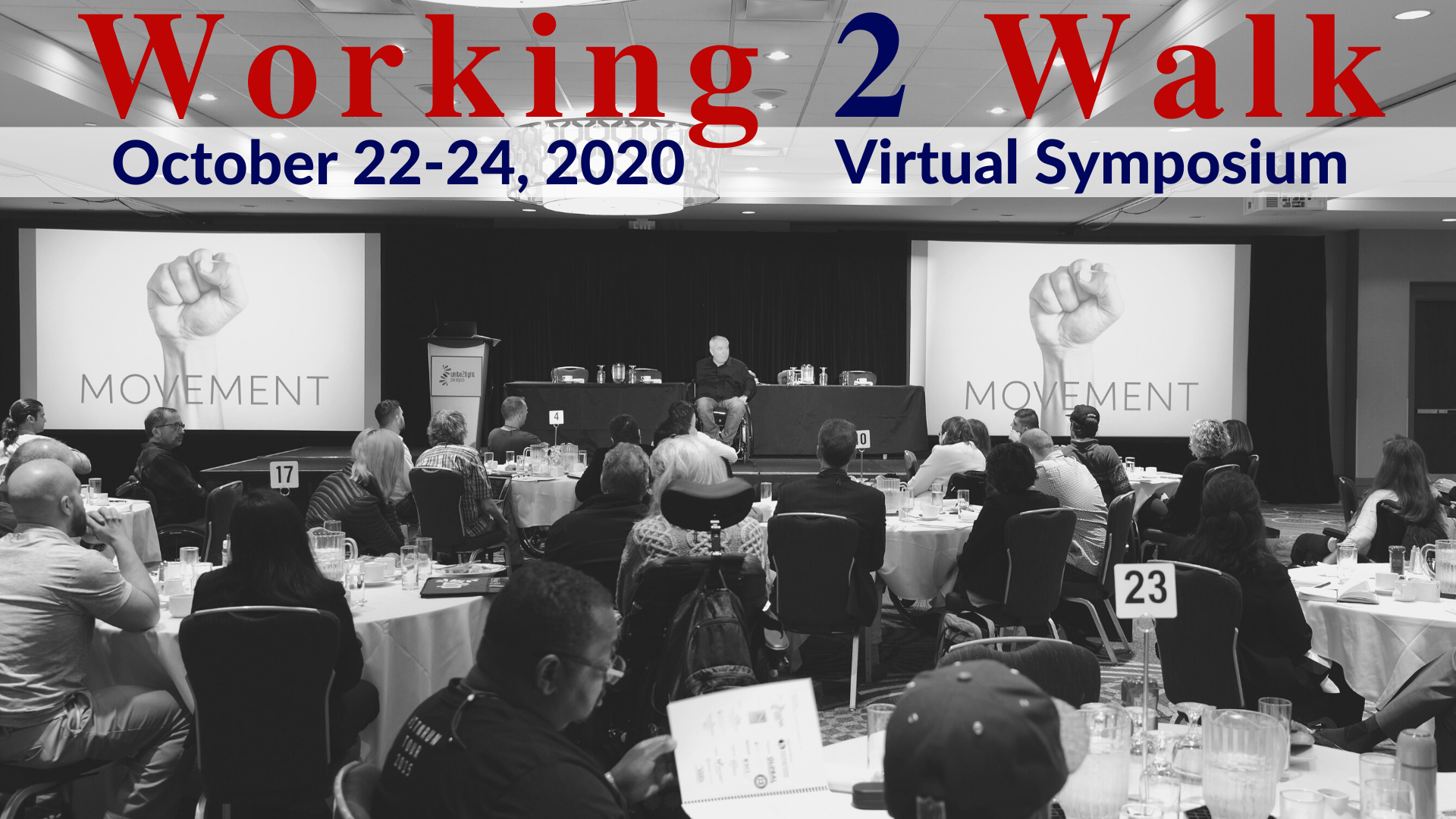
We’re disappointed that we won’t be seeing many of you in person for the 2020 Working 2 Walk Symposium, but we’re excited for you to join us at the virtual event October 22-24 (register here).
This year’s event is coming up quick, and we’re going to be dropping these notes to explain a little bit of the agenda in the hope that it will stir your thoughts and generate questions that will lead to some critical and valuable conversations for all of our attendees.
And to all of our clinician friends out there, we really want you to be part of the conversation - so we've added 10.25 hours of Continuing Medical Education (CME) credits this year (thanks to the support of our Elite Sponsor, the Craig H. Neilsen Foundation). You can find all the specific information on our website here. Just select the "Continuing Medical Education (CME) Registration" option when you register.
Kelsey Peterson, our new social media czar wrote a lovely piece last week asking how we cultivate longevity in this movement to accelerate curative interventions for SCI. Its hard work and many in our community live with a sense of urgency on the daily. Its why we have invited a number of artists with an SCI to share their (and our) stories and hopefully feed the sense of connectedness we need to sustain us.
The theme supporting this year’s agenda will be an exploration of the roles, perceptions and strategies for the 5 key stakeholders’ (as we’ve defined them):
- Laboratory Research
- Clinical Research (in humans)
- Funding Agencies & Organizations
- Industry / Biotech
- SCI Community Advocacy and Activism
These are the main groups working hard to discover, test, support and commercialize novel treatments for SCI. We’ve therefore broken up the conference agenda into 5 sessions with presentations for each of these stakeholder groups.
Attached to each of those sessions will be ample opportunity to ask questions and stimulate discussion focused on strategy.
- How do each define success?
- How do each collaborate currently? Could there be more and/or more efficient collaboration across these stakeholder groups?
- What does it mean for someone living with paralysis?
This week’s brief summary will be on the first session in the agenda: Clinical Research. There will be 3 presentations in the first session:
Dr. Leslie Morse | Department Head of the Department of Rehabilitation Medicine at the University of Minnesota
Dr. Morse will discuss the need for more robust and rigorous research on the effects of exercise, including Activity Based Therapy, in the SCI population. She will provide a summary of the current state of this research and make some suggestions toward improving our knowledge base, and maybe some assumptions that need to be challenged. Dr. Morse is currently working with U2FP’s Activity Based Exercise workgroup. The group is composed of representatives from multiple community centers across the US. The group, in partnership with Dr. Morse and her team, is working to develop a research program to define the health benefits and public health impact of exercise in the SCI population.
Mohamad Bydon, MD | Neurosurgeon & Medical Director of the Neurosurgical Registry, Mayo Clinic
Dr. Bydon will give us an update on the Phase 1 Clinical Trial published last year using Mesenchymal Stem Cells in 10 people with chronic SCI. The study involved injecting 100 million cells derived from the patient’s own abdominal adipose tissue (fat cells) to mitigate immune response. The patients were then followed looking at a number of biomarkers to better understand the effects of the intervention and why it appears to work in some but not in others. The working hypothesis is that these cells support spinal cord cells, reduce inflammation, increase blood flow and limit the formation of cysts. Bydon wants to better “delineate who will be a responder and why patients respond differently to stem cell injections”.
You might recall seeing this story on ABC’s Good Morning America featuring one of the study’s ‘super responders’, Chris Barr being interviewed by Will Reeve (son of Christopher Reeve). An important side note, this study was funded in part by the MN SCI/TBI Research Grant Program. This program was passed into law by a passionate group of MN SCI activists and was the kickstart to U2FP’s Cure Advocacy Network.
Dr. Stephana Carelli | Researcher at the University of Milan
Neurogel en Marche Association is an association of paralyzed people based in France. In 2004 the association bought the patent to a synthetic bio-material called Neurogel – the stuff was said to act as a substrate to help injured spinal cord cells recover and grow. A European clinical trial for chronic SCI had been planned for many years. Neurogel en Marche persisted, and in 2018 got a trial approved for 12 patients in China. They dropped Neurogel and opted for an activated fat cell compound; the spinal cord is surgically opened so glial scars and adhesions can be cleaned up. The fat cells fill the cavity. Early reports yet to be published indicate that there was some recovery. Dr. Carelli, a researcher at the University of Milan (working with a team called House of Miracles) was involved in the Neurogel en Marche trial. She will give a presentation on the preclinical work that led to the trial and share data from the trial itself. And throughout tell us how a committed SCI community based group pulled off a clinical trial.
Finally, our Early Bird Registration Discounts expire on Monday, September 14th - so make sure you register now to maximize your savings!
Join us!

















